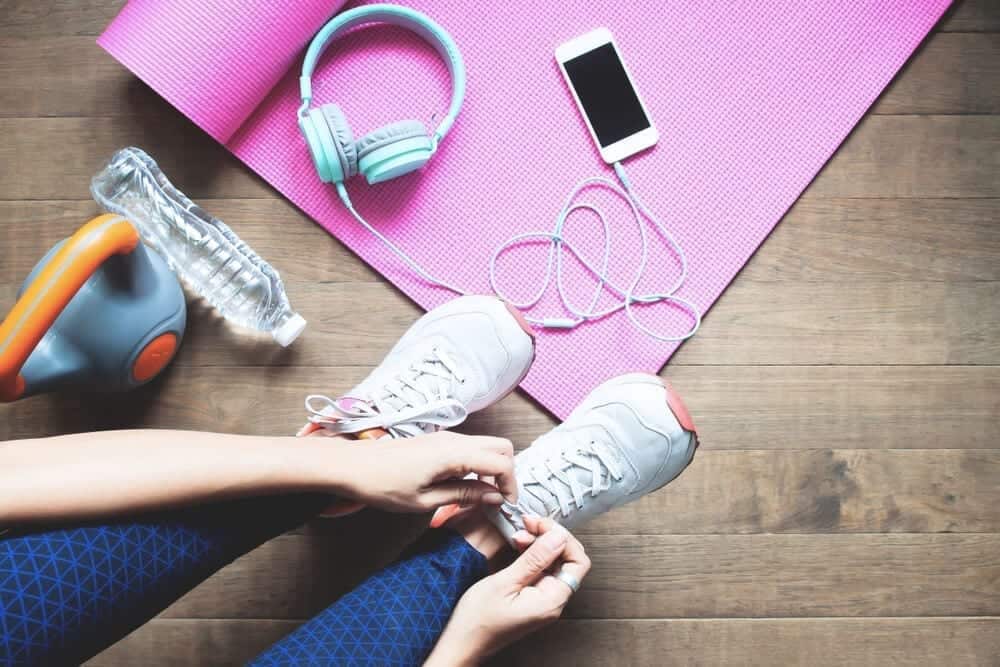
Exercise isn’t just about boosting your muscles and improving your aerobic capacity. While it can certainly make you healthier and slimmer, staying active can also give you an amazing feeling of well-being. People who exercise have more energy during the day, can sleep more effectively at night, feel more positive about themselves and enjoy greater relaxation in their downtime. Most importantly, regular exercise is an effective way to help manage mental health disorders. Staying active doesn’t even necessarily need to be about participating in hardcore sports. It simply involves adding some extra movement into your life, perhaps in the form of dancing, walking or swimming.
Regular movement has a profound and positive impact on conditions like ADHD, anxiety, and depression. It can relieve stress, improve memory, reduce insomnia and boost mood. Even a moderate amount of movement each day can make a big difference and whatever your fitness level or age, it can be harnessed as a useful tool to enjoy better mental well-being.
However, with the current COVID-19 pandemic sweeping the world and causing us all to have to socially distance or even stay at home, how can we preserve our mental well-being and still add movement into our lives? Here, we take a closer look at the ways in which regular movement helps our mental health, and how we can still reap those benefits during the lockdown.
How Does Movement Help Depression?
It has been shown that exercise is capable of treating mild or moderate depression. In fact, it can do so just as effectively as antidepressant medications but with none of the unwanted side-effects. Not only can maintaining your exercise schedule help to relieve the symptoms of depression, but it can also help to protect against relapse in the long-term.
Why does movement help depression? There are several reasons for this. Primarily, it is because it promotes change inside the brain. It increases neural growth, reduces inflammation and causes new patterns of activity that make us feel calmer. Also, it releases endorphins which are powerful chemicals inside the brain that can energize the spirits and release positive emotions. Finally, movement also serves as an effective distraction, helping you find a little quiet time each day to break negative thought cycles that feed into depression.
Exercising And Anxiety
Movement is also an effective and all-natural treatment for anxiety. It can relieve stress and tension while boosting mental and physical energy. It can enhance your well-being by releasing endorphins, and if you add some mindfulness techniques into your exercise regime, you can increase the benefits still further. Noticing how it feels when your feet hit the ground, focusing on your breathing rhythm, or feeling the wind blowing over your skin as you workout helps you to improve your physical and mental health simultaneously and can interrupt the anxious worries that constantly run through your brain.
Movement Can Combat Stress
When your body is under stress it has an impact on all your muscles. Tension occurs, particularly in the shoulders, neck, and face, resulting in neck or back pain and painful headaches. You may feel tightness in your chest, muscle cramps or a fast pulse. You may even have other issues like heartburn, insomnia, diarrhea, stomach pain or frequent urination. The additional discomfort and worry associated with these physical symptoms often cause further stress, so a vicious circle begins to develop.
Regular exercise can effectively break the cycle. It doesn’t just release endorphins, it also helps relax your muscles and relieve the tension that has built up in your body. As the mind and body are closely linked, if your body begins to feel better, the mind soon follows.
Exercising To Relieve The Symptoms Of ADHD
Regular movement is an easy and surprisingly effective way of reducing the symptoms associated with ADHD. It can improve memory, mood, motivation, and concentration by naturally boosting the dopamine, serotonin and norepinephrine levels in the brain, all of which impact on attention and focus. Exercise has even been shown to have a similar positive effect to ADHD medications like Adderall and Ritalin.
The Positive Emotional And Mental Health Benefits Of Movement
Regular physical movement offers a host of emotional and mental health benefits for everyone and not only those who suffer from mental health disorders. Some of these advantages include:
- Sharper thinking and better memory – the endorphins that help you feel better when you exercise help you to concentrate and focus on tasks. Movement also stimulates new brain cell growth to guard against age-related mental decline.
- Improved self-esteem – regular movement helps you feel good about yourself, making you feel powerful and strong. When you meet your exercise goals, you feel as if you’ve achieved.
- Improved sleep – even a small amount of physical movement helps to regulate sleep patterns and promote sleep.
- More energy – if you can boost your heart rate a few times each week, you naturally feel more energized.
- Stronger resilience – if you are facing emotional and mental challenges, exercise is a healthy coping mechanism to get you through.
It’s clear to see how these benefits could help anyone to improve their mental well-being, but for those who suffer from mental health disorders, these advantages can make all the difference.
How Can You Reap The Mental Health Benefits Of Movement?
Of course, when you’re struggling with mental health problems, one of the last things you feel able to do is work out for hours. Luckily, there’s no need to spend a long time exercising to reap the mental and physical health benefits of movement. In fact, you’ll probably find that three 10-minute or two 15-minute workout sessions each work can work wonders.
Yet, even if that seems too intimidating, there’s no need to despair. Just a few minutes of movement will benefit you. Start with five-minute sessions then slowly increase the amount of time you spend exercising. The more exercise you do, the more energetic you’ll feel, so naturally, you’ll end up increasing the amount of physical activity in your life. The key, though, is making the commitment to doing some physical movement most days. When exercising has become a habit, then you can add in more activities and lengthen the amount of time you spend.
How Can You Get Started With Adding More Movement Into Your Life If Your Depression Or Anxious?
A lot of people are unmotivated enough to exercise even when they aren’t anxious or depressed. However, if you suffer from mental health issues, it can be twice as hard. Although you know that movement will help you to feel better, depression and anxiety rob you of the motivation and energy you need to exercise and social anxiety can make it extra difficult to go out and be active in public. So, how can you add movement into your life? Here are some top tips:
- Start small and work up. Don’t begin with the intention of running a marathon or you’ll give up at the first hurdle.
- Choose a time to work out when you feel most energetic.
- Choose an activity that you enjoy. It doesn’t need to be a traditional sport. You could just dance around in your kitchen to your favorite songs or do a yoga tutorial on YouTube in your bedroom.
- Make sure you’re comfortable. Wear clothing you feel comfortable in and exercise in a place where you feel energized, calm and safe.
- Reward yourself with something for doing your daily exercise. Make it a healthy treat though – perhaps a bubble bath with your favorite products or a delicious fruit smoothie.
- Make your exercise social – exercise with a partner, a family member or a friend. This helps to give you more motivation and will make you feel better than if you exercise alone.
Exercising In Lockdown
All of this may sound well and good, but what happens when you can’t go outdoors? The current novel Coronavirus pandemic has meant that in many countries around the world, people have been told that they aren’t allowed to leave their homes. This is causing a lot of issues already for those who suffer from mental health problems. Being robbed of traditional coping mechanisms such as going to work, having a regular routine or spending time with loved ones can make it even more difficult to cope with anxiety, depression and other issues. Plus, if you’ve been using exercise as a way of relieving the symptoms of your condition, it can be extra-challenging to have to stay indoors.
Luckily, it’s possible to carry on with your regular movement regime during the lockdown. The key lies in thinking about movement as a way of living rather than a task to be checked off your to-do list. So, think about how you can add more movement into your indoor daily routine instead. Here are some ideas that you can include in your regime:
- Cleaning your home
- Doing some gardening
- Going up and downstairs
- Do some sit-ups, push-ups or stretches while watching TV
It can feel even harder to add movement into your life when you’re stuck indoors all day. The temptation to indulge in unhealthy habits like drinking too much alcohol, smoking too much or eating fatty and sugary snacks can become irresistible. While this may make you feel better in the short-term, it won’t help in the long-run and could make you feel much more depressed, anxious and stressed. Therefore, it’s more important than ever before to find ways to be physically active.
Many fitness experts have taken to the internet in an attempt to get people moving and active, even in isolation. That means you have a wide variety of options to choose from. A quick browse of YouTube will turn up countless videos for you to follow, from yoga and pilates to HIIT workouts and teach-yourself dance routines. There’s never been a better time to find a new physical hobby that you enjoy, and with videos to suit all levels of ability, you’re sure to find something that meets your needs.
If you have access to an outdoor space that you can use in lockdown, you may be able to reap even more benefits from exercising in nature. Simply spending time in the fresh air can boost your mental well-being, and it’s a lot easier to be mindful of your movement when you’re out in the sunshine.

The Perils Of Over-Exercising In Lockdown
Although there are many benefits to continuing to add movement into your life during the lockdown, it’s important to be aware of the dangers associated with over-exercising. Although a daily indoor workout could really help boost your mental well-being, if you exercise for too long in isolation, it could do you more harm than good.
In fact, exercising for extended periods, especially in isolation, can have a detrimental impact on mental health and well-being. Although it might be tempting to fill in the excess time with movement as a way of improving yourself while stuck indoors, investigations in China (the first place to order a lockdown of citizens) showed that participants in a study who worked out for over 2 and a half hours each day were less happy at the end of the experiment than those who only exercised for 30 minutes or less. If you’re already suffering from a mental health disorder, the last thing you need in isolation is to make yourself even unhappier, so don’t feel the pressure to be physically active for extended periods. Add a little movement into each day and then find other activities to fill your time and to keep you distracted from your anxieties and dark thoughts.
Getting Help During The COVID-19 Crisis
If you’re struggling to maintain your mental health during the current COVID-19 crisis, don’t hesitate to call us for advice. Our team is still on hand to offer you assistance and to answer your questions, despite the current situation. If you’re planning a stay with us in the future, this is also the perfect time to make arrangements. We’re always on hand for you, and we’ll be ready for you to stay with us again once all of this is over.
